This post may contain affiliate links. Please see our disclosure policy.
Apricot jelly is a smooth, golden preserve made from fresh apricot juice, with no pulp or skin—just pure, fruity flavor in every spoonful. It’s one of the easiest jellies to make at home, and a great way to preserve a big apricot harvest for year-round enjoyment. With a bright, floral taste and beautiful color, it’s perfect for toast, pastries, or glazing meats.
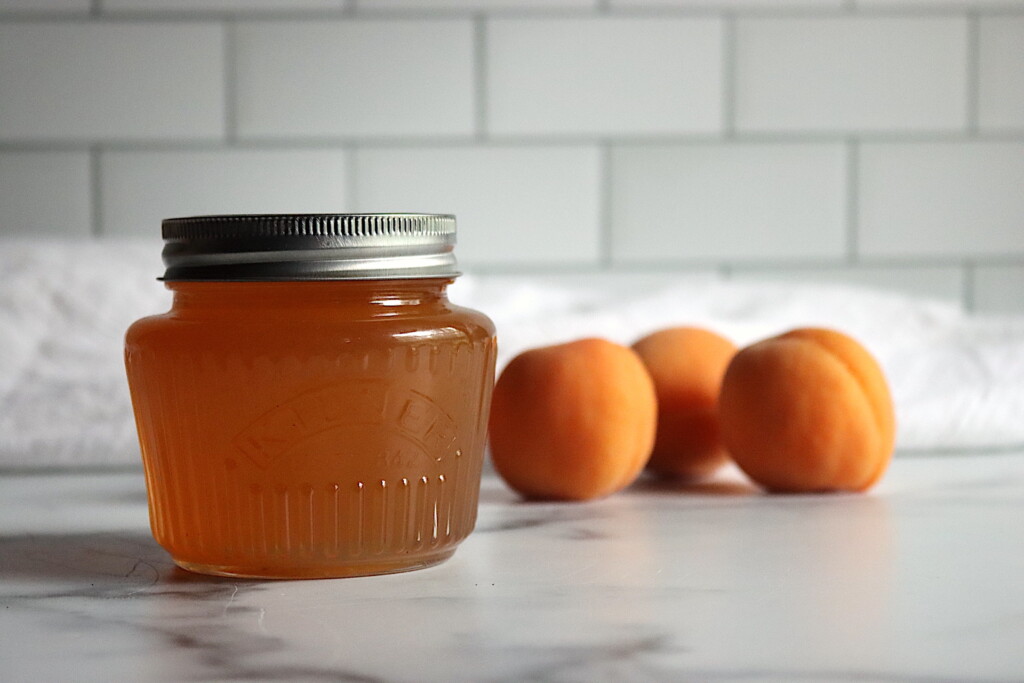
Table of Contents
Homemade apricot jelly is the essence of summer in a jar. This old-fashioned preserve captures the delicate flavor and floral aroma of fresh apricots without the texture of pulp or skin—just smooth, jewel-toned jelly. It’s a great way to make use of a bumper apricot harvest, especially if you want something seedless and refined for gifting, toast, or baking.
Unlike jam, jelly starts with fruit juice, so you’ll begin by simmering the apricots to release their flavor and then straining out the solids. From there, it’s a quick cook with sugar and pectin, resulting in a clear, vibrant jelly that sets beautifully and keeps its color and flavor all year long. If you’re new to making jelly, apricots are a forgiving fruit to work with—they have plenty of natural pectin, and the flavor is strong enough to shine even in a smooth jelly.
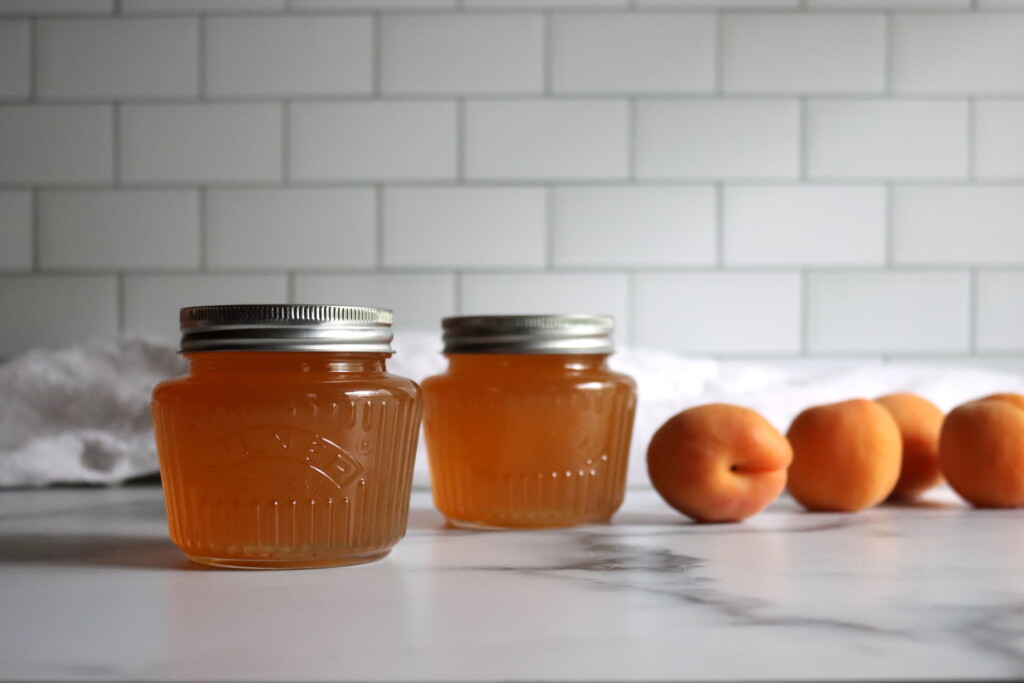
Extracting Juice for Apricot Jelly
To make a batch of apricot jelly, you’ll need about 5 pounds of ripe apricots (weighed whole). Combine them with water in a large pot and simmer for 10 minutes, mashing with a spoon or potato masher as they soften. Once they’re fully broken down, strain the mixture through a fine mesh sieve. This removes the skins and pulp, leaving you with clear apricot juice—aim for about 5 cups. If you happen to get more juice than that, set the extra aside and use it in homemade apricot syrup or any other recipe that strikes your fancy.
How to make Apricot Jelly
Now that you have apricot juice, it’s simple to turn it into jelly.
Return the strained juice to a clean pot and stir in a box of pectin (like Sure-Jell pectin) or use 6 tablespoons of bulk powdered pectin. Add a couple tablespoons of bottled lemon juice for added acidity. The lemon juice is optional, and for flavor rather than canning safety.
Bring everything to a full rolling boil, then stir in the sugar all at once. Keep stirring until it returns to a rolling boil that doesn’t stop, then boil for exactly one minute before removing the pot from the heat.
Once the jelly is ready, ladle it into prepared jars, leaving ¼ inch headspace.
Wipe the rims, apply two-piece lids, and process for 10 minutes in a boiling water bath canner (or 15 minutes if you’re above 6,000 feet elevation). Let the jars cool undisturbed for 12 to 24 hours before checking the seals.
Once sealed, your jelly will keep for 12 to 18 months in a cool, dark pantry. If a jar doesn’t seal, store it in the fridge and use it within a few weeks.
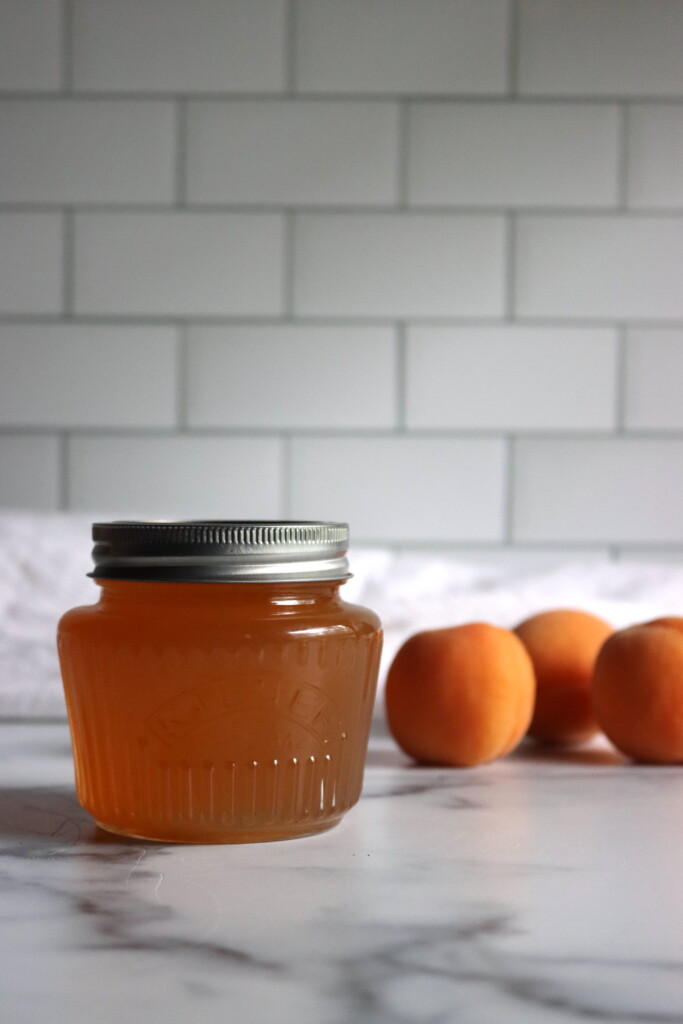
Serving Suggestions
Apricot jelly pairs well with buttery pastries, soft cheeses, or stirred into yogurt. It also makes a great glaze for chicken or pork and adds subtle sweetness to pan sauces and vinaigrettes. Try brushing it onto a fruit tart for a glossy finish, or warm a spoonful to drizzle over ice cream.
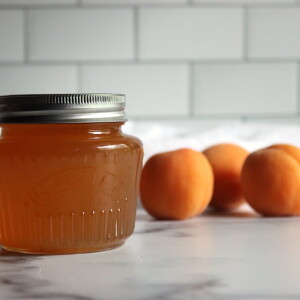
Apricot Jelly
Equipment
Ingredients
- 5 lbs apricots
- 2 cups water
- 1 box Powdered Pectin, 1.75 ounce box, regular pectin, or 6 tablespoons bulk pectin
- 2 Tbsp lemon juice, bottled
- 5 cups granulated sugar
Instructions
- Start by washing, halving and pitting the apricots. Pitting is technically optional, since you're going to be straining, but they come out so easily it just makes sense (and then you can use the leftover pulp for apricot butter).
- Combine the apricots and water in a large stockpot. Bring to a boil, then simmer for 10 minutes, mashing the fruit gently to help it break down. Strain through a fine mesh sieve to remove skins and pulp, pressing to extract juice.
- Measure 5 cups of juice and discard or save the excess for another use.
- Return the juice to a clean pot. Add pectin and lemon juice, and bring to a rolling boil over high heat, stirring frequently.
- Once the mixture is boiling, add all the sugar at once and stir constantly. Return to a full rolling boil that cannot be stirred down, and boil exactly 1 minute. Remove from heat.
- Ladle hot jelly into sterilized half-pint jars, leaving ¼ inch headspace. Wipe rims, apply lids and rings, and process in a boiling water bath canner for 10 minutes (15 minutes if above 6,000 feet elevation). Let jars cool for 12–24 hours and check seals before storing.
Notes
Nutrition
Nutrition information is automatically calculated, so should only be used as an approximation.
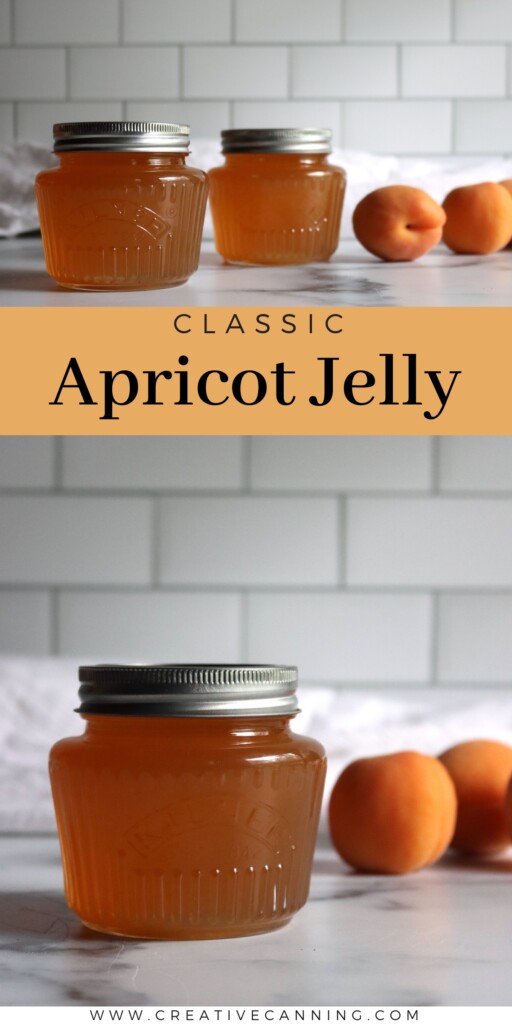
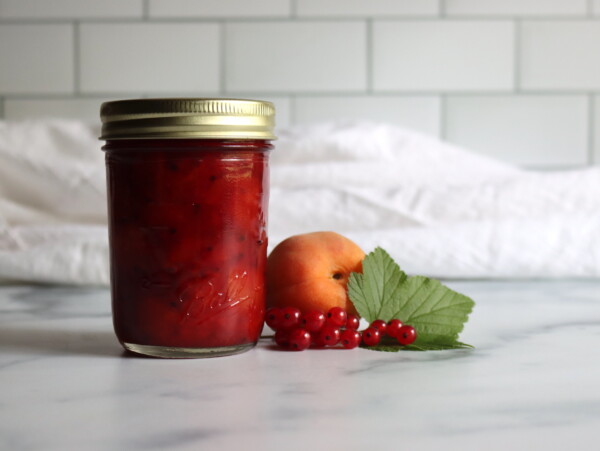
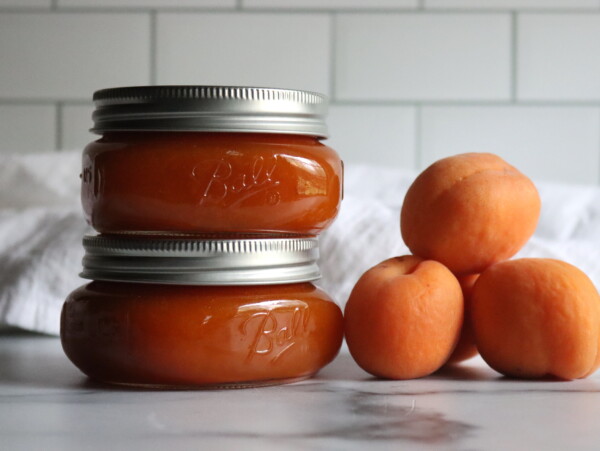
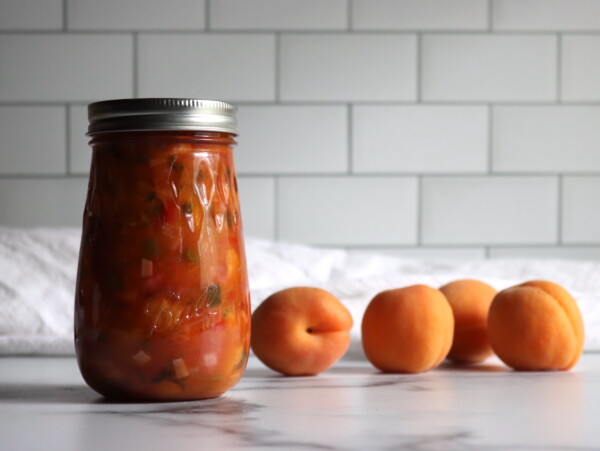
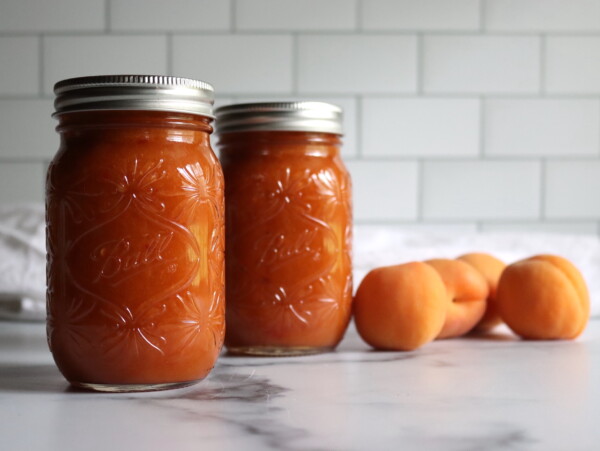
My husband absolutely loves this one on toast! I’d read though, that the traditional way to use it was to glaze pastries when they come right out of the oven, so that’s where I’m most excited to use it.